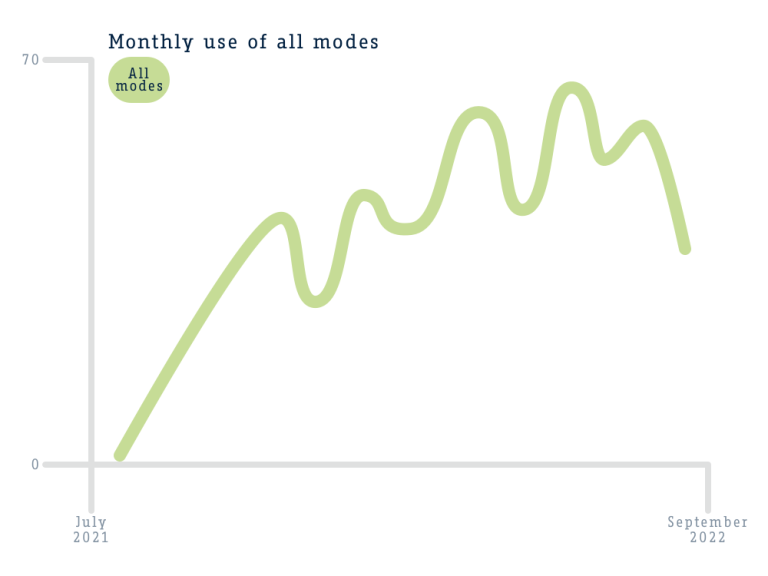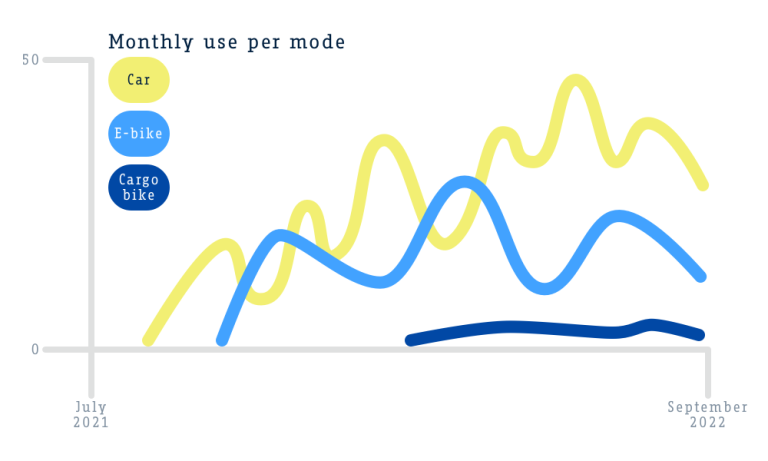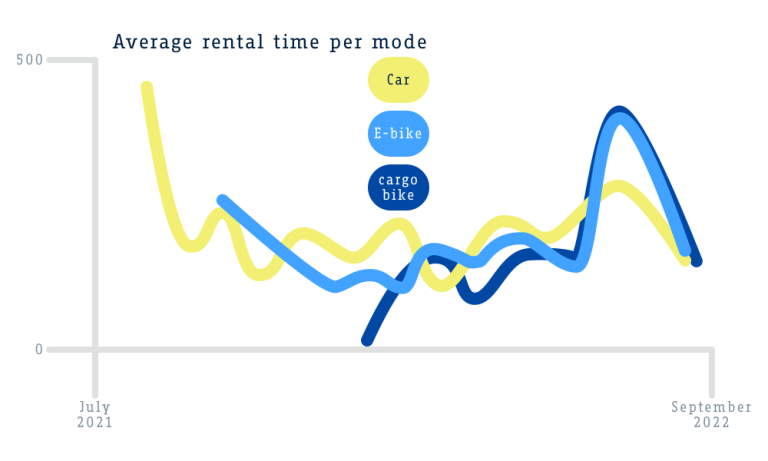Creating smart
shared mobility options
for the city of tomorrow
About SmartHubs
In a world with increasing pressure on urban space and climate, there is a clear need for innovative and sustainable mobility solutions.
SmartHubs is an EIT Urban Mobility project. It develops and validates effective and economically viable mobility hub solutions.
Current project cities
In six European cities with different urban characteristics and demographics, a comparison is made between smart mobility hubs. The aim is to test and validate economically viable mobility hub concepts that foster the modal shift to sustainable transportation and more efficient use of urban space
“Click on one of the hubs in the yellow menu to learn more about each hub”
Fashion Hotel
Amsterdam is testing different types of shared mobility concepts and hubs to learn if and how they can be an alternative for residents to private car ownership.
Hub characteristics
Hub goals
Change private car trips into more sustainable and shared modes of transport.
Test the business case and impact of publicly accessible mobility hubs in non-public indoor and outdoor spaces.
Develop decision support for policymakers and developers on where to locate what kind of hubs.
Demographics
Modal Split
Student Hotel
Amsterdam is testing different types of shared mobility concepts and hubs to learn if and how they can be an alternative for residents to private car ownership.
Hub characteristics
Hub goals
Change private car trips into more sustainable and shared modes of transport.
Test the business case and impact of publicly accessible mobility hubs in non-public indoor and outdoor spaces.
Develop decision support for policymakers and developers on where to locate what kind of hubs.
Results
Demographics
Modal Split
Eindhoven
The City of Eindhoven is testing the integration of smart mobility hubs with P+R (Park and Ride) areas along the main access roads going into the city.
Hub characteristics
Hub goals
Reduce traffic congestion on access roads into the city center and realize a low-traffic city.
Integrate shared mobility concepts at a permanent P+R hub for visitors who usually take their private cars into the city.
Develop decision support for policymakers and developers on where to locate what kind of hubs.
Demographics
Modal Split
Helmond
Helmond aims to realize 10.000 new houses before 2040 in the area surrounding Central Station. Therefore, the city is exploring reducing parking space, using public space for green areas, and improving the sustainability of the traffic system.
Hub characteristics
Hub goals
Develop alternatives to owning a (second) car for local residents.
Reduce parking ratio to create space for public green and recreation in the neighborhood.
Develop decision support for policymakers and developers on where to locate what kind of hubs.
Demographics
Modal Split
Lisbon
EMEL (Lisbon’s Municipal Company for Mobility and Parking, an operating arm of the city council for mobility management) is working on a new concept of mobility hubs for short distance trips within the city of Lisbon. Our innovation team are currently working on the ideation of the concept with a citizen-centred approach, paying particular attention to the needs, preferences and expectations of users. Following a co-creation process, we aim to upgrade an existing bike sharing station into a new mobility hub to boost public transport and provide more connectivity to citizens.
Hub characteristics
One bike sharing docking station with capacity for 20 e-bikes
The bike sharing docking station is (will be) located near BUS stop and Metro Station
Other mobility services, amenities for improved multimodality (e.g. Wi-Fi hotspot, quick maintenance pitstop for bikes) and other added-value services (e.g. pick-up point, lockers, EV charging etc), that will be explored according the user needs and preferences.
Hub goals
Promote the use of shared mobility services by offering a variety of services in a single location.
Facilitate multimodality, such that local commuters will take their bike or use a shared mobility service in their trips in the city.
Promote the use of low-carbon transport solutions.
Demographics
Modal Split
Sant Cugat
The Sant Cugat hub is located in the train station of Mira-Sol in the municipality of Sant Cugat (Metropolitan Area of Barcelona). It is part of a broader policy context to promote the use of bicycles.
Hub characteristics
Hub goals
Increase the use of bicycles among commuters in combination with public transport.
Increase the use of cargo e-bikes among local residents visiting the shopping mall.
Develop decision support for policymakers and developers on where to locate what kind of hubs.
Foster the use of cargo e-bikes by the shopkeepers of the shopping mall.
Demographics
Modal Split
Setúbal
The hub in Setúbal is part of a development program to promote the use of public transport and bicycles among residents in the wider metropolitan area surrounding Lisbon.
Hub characteristics
Hub goals
Increase the use of bicycles among commuters and visitors in combination with public transport.
Reduce traffic congestion and parking pressure coming from the high usage rates of private cars among residents and visitors.
Develop decision support for policymakers and developers on where to locate what kind of hubs.
Demographics
Modal Split
Warsaw
The Warsaw-based “Mobile City” Association (in Polish: Mobilne Miasto) is advocating for a more sustainable local transport system by implementing a network of multimodal mobility hubs offering a variety of highly-effective and eco-friendly shared mobility solutions.
Hub characteristics
- Car sharing zone with 4 parking spaces
- Micromobility zone with shared e-scooters and e-mopeds
Hub goals
Bringing shared mobility solutions closer to the citizens by gathering them in specially designated mobility hubs.
Creating more liveable and useful urban spaces by transforming low-effective parking spaces into vibrant mobility hubs.
In the long run: reducing dependency on private cars and decrease the individual motorization rate among the local society
Demographics
Modal Split
Our latest updates
This is what we’ve been up to so far:
Webinar series
Mobility for the city of tomorrow
Have we sparked your interest?
Do you want to know more about the project? Leave your email here and we will be in touch!
Creating smart mobility solutions together
SmartHubs brings together a diverse consortium of cities, companies, and universities to develop and validate smart shared mobility hubs.
It’s an EIT Urban Mobility project that researches and runs pilots in several European cities. It aims to accelerate the successful implementation of mobility hubs, maximize citizens’ accessibility and inclusion, and reduce emissions.
We partner up with:
Contact
SMARTHUBS © 2022 | PRIVACY STATEMENT


